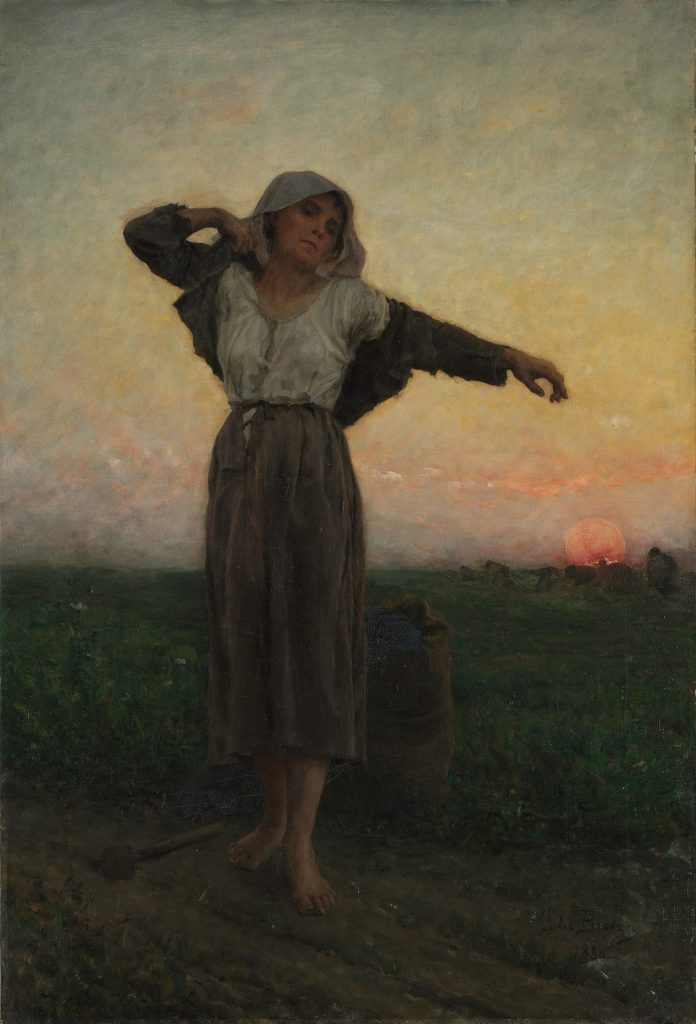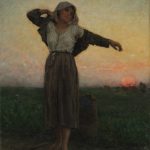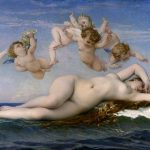
Breton was born on 1 May 1827 in Courrières, a small Pas-de-Calais village. His father, Marie-Louis Breton, supervised land for a wealthy landowner. His mother died when Jules was 4 and he was brought up by his father. Other family members who lived in the same house were his maternal grandmother, his younger brother, Émile, and his uncle Boniface Breton.
A respect for tradition, a love of the land and for his native region remained central to his art throughout his life and provided the artist with many scenes for his Salon compositions.
His first artistic training was not far from Courrières at the College St. Bertin near Saint-Omer. He met the painter Félix De Vigne in 1842 who, impressed by his youthful talent, persuaded his family to let him study art. Breton left for Ghent in 1843 where he continued to study art at the Academy of Fine Arts with de Vigne and the painter Hendrik Van der Haert.
In 1846, Breton moved to Antwerp where he took lessons with Egide Charles Gustave Wappers and spent some time copying the works of Flemish masters. In 1847, he left for Paris where he hoped to perfect his artistic training at the École des Beaux-Arts.
In Paris he studied in the atelier of the Michel Martin Drolling. He met and became friends with several of the Realist painters, including François Bonvin and Gustave Brion and his early entries at the Paris Salon reflected their influence.
Breton’s Early Works
His first efforts were in historical subjects: Saint Piat preaching in Gaul then, under the influence of the revolution of 1848, he represented Misery and Despair. The Salon displayed his painting Misery and Despair in 1849 and Hunger in 1850-51.
Both paintings have since been destroyed. After Hunger was successfully shown in Brussels and Ghent, Breton moved to Belgium where he met his future wife Elodie. Elodie was the daughter of his early teacher Félix de Vigne.
In 1852, Breton returned to France. But he had discovered that he was not born to be a historical painter, and he returned to the memories of nature and of the country which were impressed on him in early youth. In 1853 he exhibited Return of the Reapers, the first of numerous rural peasant scenes influenced by the works of the Swiss painter Louis Léopold Robert.
Breton’s interest in peasant imagery was well established from then on and what he is best known for today. In 1854, he returned to the village of Courrières where he settled. He began The Gleaners, a work inspired by seasonal field labor and the plight of the less fortunate who were left to gather what remained in the field after the harvest.
The Gleaners received a third class medal, which launched Breton’s career. He received commissions from the State and many of his works were purchased by the French Art Administration and sent to provincial museums. His 1857 painting Blessing of the Wheat, Artois was exhibited at the Salon the same year and won a second class medal. Source: Wikipedia.




